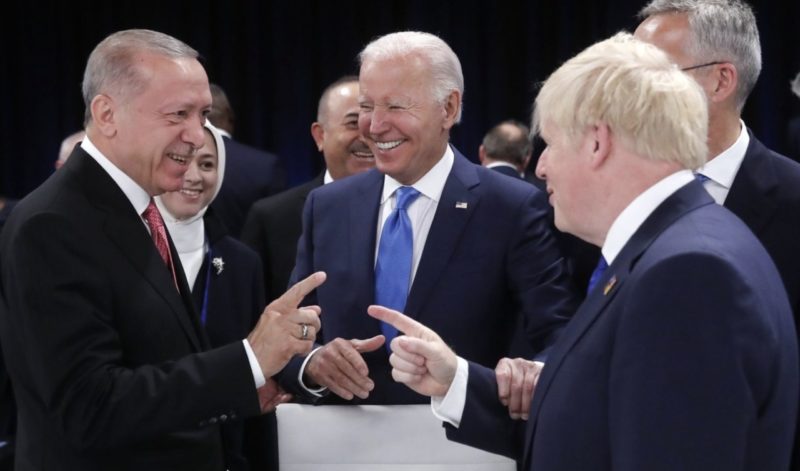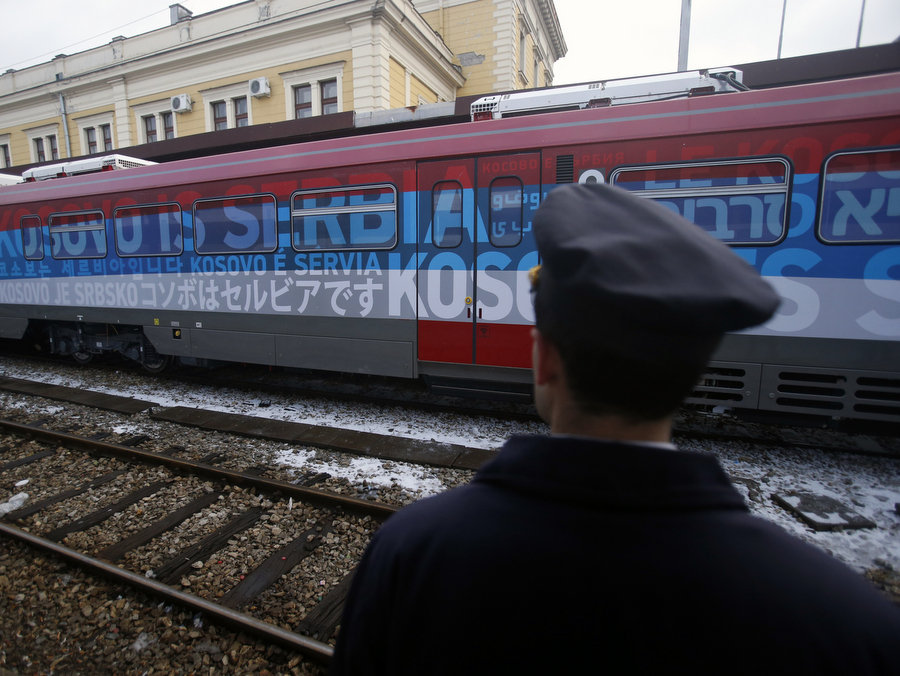Both The New York Times and The Washington Post see the failure to deliver tanks to Ukraine as the first sign of discord within NATO. It is not the first. It is not even the second indication of an Alliance facing internal strife.
“Germany’s refusal to approve the transfer of dozens of heavy battle tanks to Ukraine opened the first serious crack in what had been NATO’s solid front.”
NATO's front is not solid. Lack of open discord, as experienced under former President Trump, must not be misunderstood as being united and strong.
The world's biggest military alliance has limited itself to providing non-military support only despite its past pledge to “help manage developing crises that have the potential to affect Alliance security before they escalate into conflicts; to stop ongoing conflicts where they affect Alliance security; and to help consolidate stability in post-conflict situations where that contributes to Euro-Atlantic security.”
The establishment of the Multinational Joint Commission in 2014 in support of Ukraine was the first sign of discord. The US correctly assessed that it would be impossible to set up a support mission inside the Alliance due to its slow decision process and the need for consensus by all member states. France and Germany led a diplomatic effort aiming for a peaceful resolution of the war – an attempt that had no chance of success – but limited the West's ability to strengthen Ukraine's Armed Forces. Consequently, the MJC was established as a multinational effort outside the Alliance.
In September 2021, the EU parliament assessed that the EU member states were exposed to a Russian hybrid war. Recognizing that most of the EU members are also NATO members, NATO's failure to acknowledge that it is under attack is a second sign of discord. An acknowledgment would have triggered Article 5 – collective defense. The member states instead compromised on the rather feeble statement that the Euro-Atlantic area is not at peace
.
The Heads of State and Government of the 30 NATO Allies met on 24 March 2022 to address Russia's aggression against Ukraine, the gravest threat to Euro-Atlantic security in decades. The outcome of the meeting was a third sign of discord. President Biden stressed the crucial importance of absolute unity among NATO allies, while Secretary General Stoltenberg highlighted that NATO was determined to do all it can to support Ukraine. The outcome – the decision to provide non-military support only – was a result of the "weakest links" being allowed to define the Alliance's level of ambition. This was in direct conflict with the aspirations of the countries that knew Russia the best and remembered the costs of occupation and oppression.
During the spring of 2022, several countries in Eastern Europe argued publicly in favor of greater NATO involvement in what must be seen as the fourth sign of discord. Poland, the Czech Republic, and Slovenia put forward a 10-point plan to save Ukraine. The Polish Prime Minister stressed that if this does not stop the war, then we must go further and protect the people of Ukraine with our shields.
"In Kyiv, we proposed a peacekeeping mission under the aegis of NATO and other international organizations. If we cannot introduce effective sanctions, we have no choice: We must protect the people of Ukraine with our own shields. If we want to restore peace, Putin needs to know where the red line is – the line he cannot cross. The fact that Russia has a nuclear arsenal cannot be an excuse for passivity. We must be cognizant of this threat, but it cannot hold us back. Otherwise, Putin will only go further," Prime Minister Morawiecki said.
The outcome of the Madrid Summit in June 2022 is a fifth sign of discord – Madrid Summit. The very strong and binding previous text that has been one of NATO's three core tasks for 23 years was deleted from its strategic documents.
NATO’s Strategic Concept-2022: names Russia as threat, deletes key commitment to act on this threat
NATO’s Strategic Concept-2022 became a commitment to do less as the Alliance is no longer committed to “stop ongoing conflicts where they affect Alliance security.”
Many of its member states, however, remain committed to defending democracy beyond NATO's area of responsibility.
President Emmanuel Macron's suggestion that Ukraine should make concessions on its sovereignty to help Russian leader Vladimir Putin save face was a sixth sign of discord. His ill-timed initiative was only one out of many indications of an Alliance without a clear strategy and united view on the extent of the Russian aggressions, the broader confrontation versus the so-called "War in Ukraine," how to counter Russia, red lines, and the end state.
Türkiye's refusal to accept Sweden and Finland's membership applications might be seen as a seventh sign of discord. While all member states uphold their national interests and consensus building is a normal process in NATO, the Turkish conditions for accepting the applications are both untimely and unacceptable at a time when European security is at risk.
The German reluctance to provide Leopard 2 tanks to Ukraine, however, is not the eighth sign of discord. It is only a part of a much larger problem. The eighth sign of discord is the NATO member state's refusal to deliver any of the tools Ukraine needs to evict the Russian forces from its territory. It is asking for both combat aircraft, long-range fire (beyond what it has already received), tanks, drones, and more - many more – pieces of artillery and Infantry Fighting Vehicles.
While Eastern Europe is giving all they have, Western Europe and the US are not only holding back but are, in parts, supplying old, low-tech equipment.
The true discord is in situational awareness, strategy, and existing capability gaps.
Countries in Eastern Europe are already defending their independence and sovereignty. They are not supporting Ukraine out of the goodness of their heart but because they realize that they are the next targets for an increasingly more belligerent Russia. Their line of defense, however, is in eastern Ukraine.
The rest of NATO is not only partly ignoring Ukraine's call for support but also ignoring the call from NATO members to act to stop a conflict that affects their security.
Several Eastern European countries are providing support way above their weight (more than 1% of GDP). Some have been taking strategic risks emptying their stockpiles, knowing that the weapons they supply will not be replaced for years for a lack of production capacity. Despite the low stockpiles across NATO, it is aiming for a prolonged war it will have problems sustaining. There is a massive gap between the urgent need for weapons and ammunition and the defense industry's lack of ability to ramp up production.
Estonia has just decided to give all its 155 mm howitzers to Ukraine, wanting to create a precedent in this way so that other countries do not have any excuses why they cannot provide Ukraine with the necessary weapons to win the war.
The bottom line is that NATO is not united. NATO has lost credibility for walking away from past ambitions and not acting according to its previous strategic concept. It's divided between those who remember occupation and those who do not. It's split between those who want to defend European security and stability and those who remain uncommitted. It's divided between east and west and between those who invest in security and defense and those who have not.
NATO needs to be united in the face of a broader confrontation. Discord leaves it vulnerable to Russia's effort to split the Alliance and weaken the trans-Atlantic link.
A starting point would be to defend the member states that are already defending their independence and sovereignty in Ukraine.
As previously stressed in "NATO's defining moment is now or never":
It is time to rise to the occasion and demonstrate the resolve and courage needed. While we are not obliged to defend Ukraine, we are committed to defending ourselves. That responsibility just happens to start in Ukraine. NATO needs to help Ukraine to help us stop Russia at Ukraine's eastern borders to safeguard our common values and principles.
Related:
- Record-high 86% of Ukrainians support country’s accession to NATO, poll shows
- New military assistance will enable Ukraine to launch offensives – NATO Secretary General
- Why Ukraine will win in 2023
- NATO’s new Strategic Concept gives short shrift to Eastern Neighborhood and Ukraine
- Why a humanitarian intervention in Ukraine is in NATO’s interest
- Russia’s war with Ukraine affects billions. NATO could end it in a moment.





